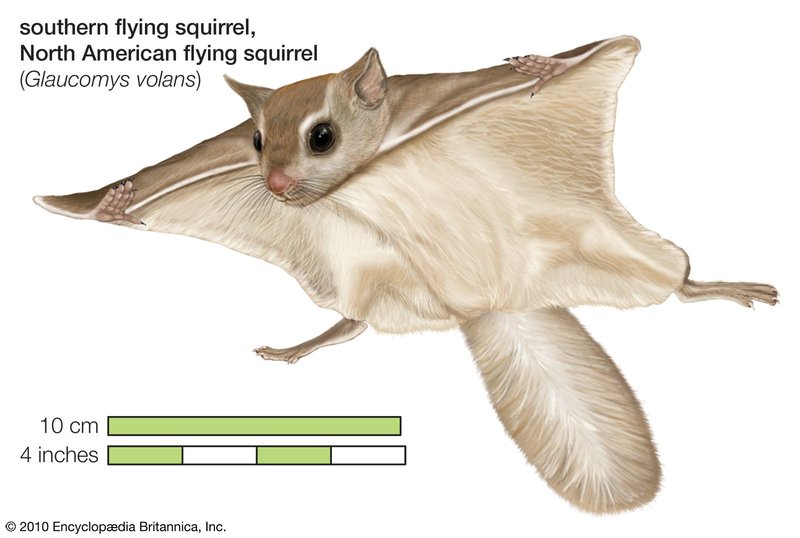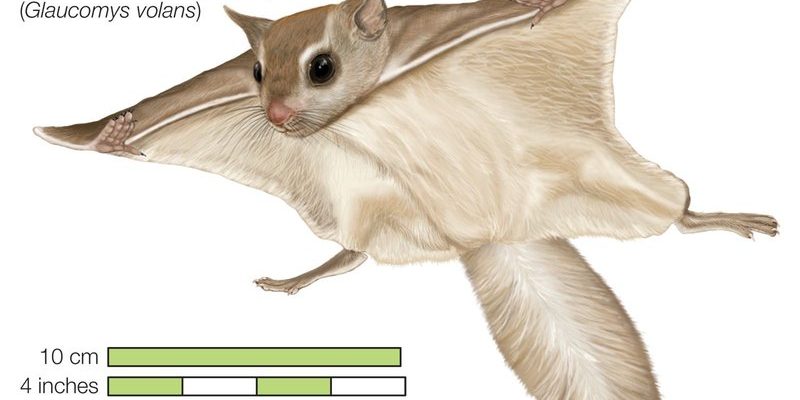
Flying squirrels aren’t just about their impressive gliding skills; they also have a fascinating lifestyle filled with interesting behaviors and an important role in their habitats. They’re not your typical squirrels. Instead of just foraging for food, they engage in a variety of activities that support other species and even the overall health of the forest. So, let’s dive into the world of flying squirrels and see how they contribute to their ecosystem!
What Are Flying Squirrels?
Flying squirrels belong to the family Sciuridae and are known for their special adaptations that enable them to glide. They possess a flap of skin called the patagium that stretches from their wrists to their ankles. This allows them to soar between trees much like a bird but without flapping their limbs. With their large, nocturnal eyes, they navigate through their world after dark, making them true night-time adventurers.
There are a couple of species of flying squirrels, with the most recognized being the Southern Flying Squirrel and the Northern Flying Squirrel. Each of these species has adapted to its environment, showcasing different behaviors and dietary preferences. Understanding these adaptability traits is key to recognizing how they fit into their ecosystems.
Seed Dispersers
One of the most significant roles flying squirrels play in their ecosystems is being seed dispersers. When they munch on nuts and seeds, they often bury some for later. This behavior is similar to a natural planting system; those forgotten seeds can sprout into new plants. This not only promotes plant diversity but also helps maintain the health of the forest.
Here’s the thing: when flying squirrels bury seeds, they’re inadvertently aiding in reforestation. As certain trees decline or get damaged, flying squirrels help ensure that new trees can grow and take their place. This process supports numerous other species that rely on these trees for shelter and food.
Food for Other Wildlife
Flying squirrels are also an important food source for various predators, including owls, hawks, and weasels. By being part of the food chain, they contribute to the balance of different populations within the ecosystem. If flying squirrels were to disappear, it could lead to an overpopulation of their prey and a reduction in the species that rely on them for food, creating a ripple effect through the ecosystem.
Their role as prey highlights the interconnectedness of nature. Each species depends on one another for survival. Flying squirrels, with their unique lifestyle, help illustrate this complex web of life.
Habitat Creation and Biodiversity
Flying squirrels contribute to habitat creation in a few fascinating ways. As they glide from tree to tree, they may knock down leaves, fruits, and nuts that other animals benefit from. Additionally, their nesting habits influence tree health. By building nests in tree cavities, they help promote the growth of fungus and mosses that can occur inside these homes, creating a mini-ecosystem.
The presence of flying squirrels can indicate a healthy, biodiverse forest. Generally, the more diverse an ecosystem, the more resilient it is. When flying squirrels thrive, it often means that many other forms of wildlife can, too, leading to rich habitats full of life.
Indicators of Environmental Health
Another interesting aspect of flying squirrels is their ability to serve as indicators of environmental health. Because they are sensitive to changes in their environment, such as habitat loss or pollution, their presence can signal the overall condition of an ecosystem. If flying squirrel populations are declining, it may be a sign that the forest has problems needing attention.
Conservation efforts often focus on ensuring that flying squirrels have suitable habitats. By preserving their homes, we also protect many other species within that ecosystem. It’s a win-win situation for biodiversity and ecological stewardship.
Challenges Facing Flying Squirrels
Despite their fascinating contributions, flying squirrels face several challenges, primarily due to habitat destruction. Urbanization, logging, and agriculture are cutting down the forests they depend on. This loss of habitat not only threatens their populations but also impacts the entire ecosystem they help sustain.
Moreover, flying squirrels are susceptible to predation and competition from other species. As urban areas creep into their natural habitats, they may struggle to find food and shelter. Conservation programs that focus on habitat restoration and protection can help mitigate these issues, ensuring that flying squirrels can continue to thrive.
Flying squirrels may not be the most talked-about animals in the forest, but their role in the ecosystem is undeniably important. From dispersing seeds to providing food for predators, they contribute to the balance and health of their habitats in numerous ways. Their unique adaptations and behaviors illustrate a fascinating side of nature that deserves appreciation.
As we think about conservation and protecting our ecosystems, it’s vital to remember all the little players like the flying squirrel that help keep the balance. By supporting initiatives aimed at preserving their habitats, we can ensure that these incredible creatures continue to thrive and play their part in maintaining healthy ecosystems for generations to come.

